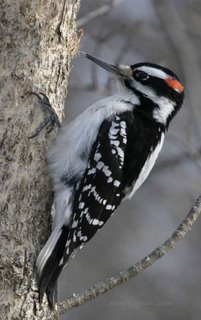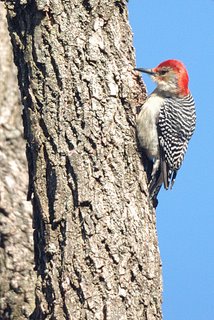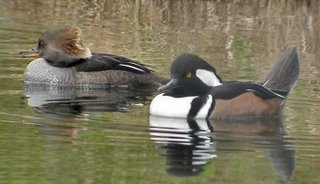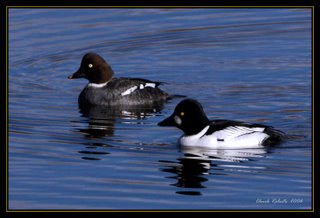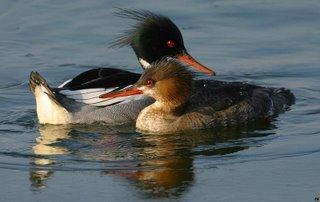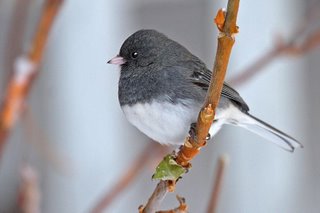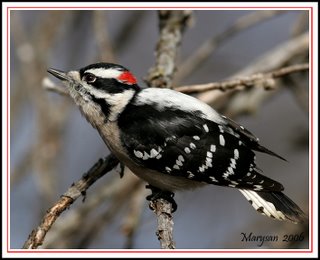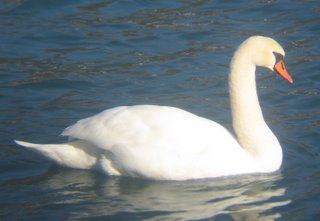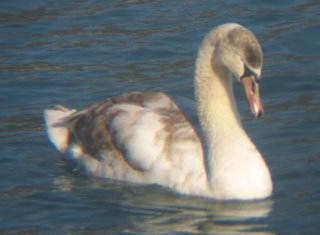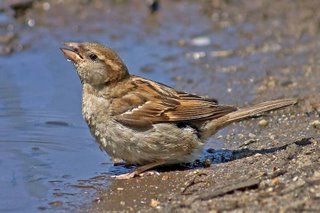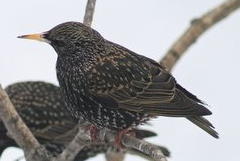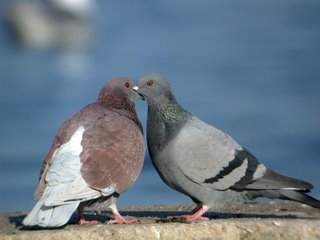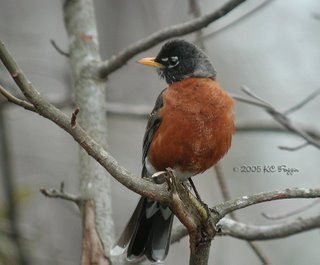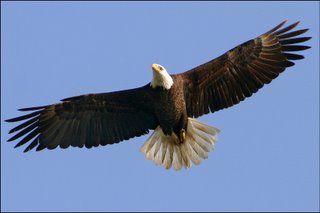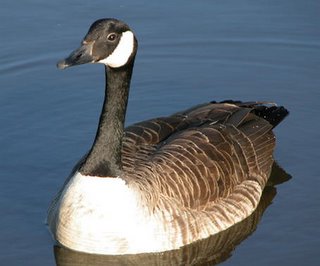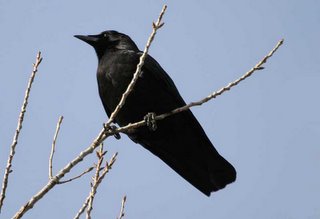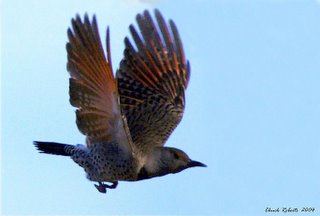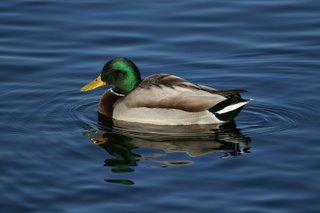On a flight from Chicago to Denver with my family
Saturday, December 31st, 2005, 11amMy wife's nickname for me when we were courting back in the mid 1990's was Birdman. Out of my third story condo window in Chicago on the corner of Grace & Freemont, I hung three bird feeders where over the course of a year, I spotted 14 different bird species at my feeders. Eventually my condo association sued me to take them down because of the "mess."
I have watched birds all my life. I continue to watch them today. I have had them as pets several times. I have bird feeders in both our front and backyards. My daughter Anna Grace's first word was "birdz," as I regularly showed her the sparrows, finches and Cardinals that ate at our front porch feeders.
My first recollection of seriously watching birds took place at Horicon Marsh in a November of a year before, or shortly after, my sister Joanne was born in 1967. The water froze early that year, before the height of migration season. The Canada Geese continued to try and land in formation on what they expected to be water. As they hit the ice it was nothing but a tangle of confused and angry wings, feathers, legs, necks and bills. It was one of the most wonderfully riotous natural spectacles I had ever seen.
From that day until now, I would imagine that as active bird watcher I have seen between 150-200 different bird species. I am counting none of them as a birder, I am starting with clean slate as I step into this venture. This may seem silly to some, but really, it is the only way I can build a life list that is accurate and not filled with the inaccuracies of memory.
Collecting has also been a passion of mine ever since my dad and then my grandfather introduced me to coin collecting at age 5 or 6. I collected coins seriously throughout my childhood and into my senior year of high school. I even won some awards for displaying my collection of "error" coins at the 1978 ANA (American Numismatic Association) Annual Show in St Louis. But in college my interest in coin collecting subsided as I had little disposable income to collect new finds. It was then that I discovered the wonderful realm of collecting experiences instead of things. Books read, places and miles hitchhiked, number of different beers consumed, and rock concerts attended. Hey, it was college, it could have been worse.
As I grew older my experiential collections would lead me to trying to see every play in the Shakespeare canon (completed when I saw King John on May 19, 2004, at Chicago Shakespeare Theatre on Navy Pier), attending every Major League Baseball Park (completed in June of 2005 when I saw the Cubs beat the Padres at Petco Park in San Diego...it was my 46th ballpark since I began my quest in 1993), running a marathon in every state (currently at 47 marathons and ultras run in 27 states), and climbing to the top of every Colorado fourteen thousand foot peak (at 14 of 52...this one is going to be hard).
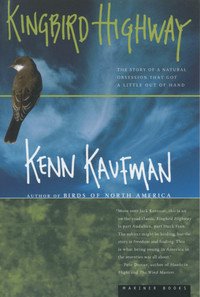 I like diverse and challenging life collections. It was only a matter of time before collecting and bird watching became birding, to use Kenn Kaffman's distinction from the early pages
I like diverse and challenging life collections. It was only a matter of time before collecting and bird watching became birding, to use Kenn Kaffman's distinction from the early pages of "Kingbird Highway." I knew I was edging closer to this birding reality after I read "The Big Year" and then took my family to the Jasper-Pulaski Wildlife Area in Indiana to see the annual Sandhill Crane migration. The birders I met were so friendly and inviting and freely shared their passion and scopes despite my lack of any birding knowledge.
of "Kingbird Highway." I knew I was edging closer to this birding reality after I read "The Big Year" and then took my family to the Jasper-Pulaski Wildlife Area in Indiana to see the annual Sandhill Crane migration. The birders I met were so friendly and inviting and freely shared their passion and scopes despite my lack of any birding knowledge.

 Then I read "Grail Bird," and I really wanted to share those birders passion for finding the Ivory Billed Woodpecker. I wanted to be part of that, no matter how peripherally as a rookie birder in Chicago. But once I started reading Kaufman's "Kingbird
Then I read "Grail Bird," and I really wanted to share those birders passion for finding the Ivory Billed Woodpecker. I wanted to be part of that, no matter how peripherally as a rookie birder in Chicago. But once I started reading Kaufman's "Kingbird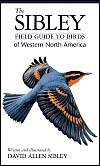 Highway," and found that Santa had left me "Sibley's 2003 Eastern & Western Field Guides" in my Christmas stocking, I was hooked. I knew that my interest in birds was going to evolve from being just a bird watcher to an active birder. I set the start date for this next quest to begin as January 1st, 2006.
Highway," and found that Santa had left me "Sibley's 2003 Eastern & Western Field Guides" in my Christmas stocking, I was hooked. I knew that my interest in birds was going to evolve from being just a bird watcher to an active birder. I set the start date for this next quest to begin as January 1st, 2006.
What follows are my experiences as a rookie birder trying to develop the skills and learn how to go to the places that will someday make me a member of the 600 Club...maybe even the 700 Club before it is all over...but by then I hope not to be a rookie birder any more!
 They had to be HERRING GULLS (photo Andy Vidler), and a quick look at my Sibley's confirmed that they were.
They had to be HERRING GULLS (photo Andy Vidler), and a quick look at my Sibley's confirmed that they were.